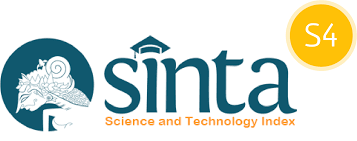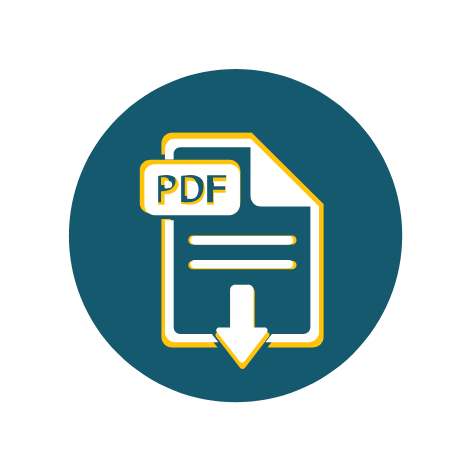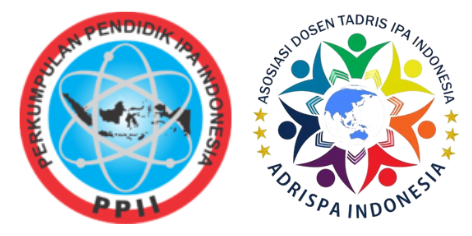FISIKA DAN BUDAYA: PANDANGAN GURU TENTANG INSERSI BUDAYA DALAM PEMBELAJARAN FISIKA
DOI:
https://doi.org/10.35719/vektor.v6i1.149Keywords:
budaya, pembelajaran fisika, insersi budayaAbstract
Pembelajaran fisika di tingkat SMA sering dipandang kompleks dan abstrak, menyebabkan kesulitan pemahaman dan kurangnya minat siswa. Insersi budaya dalam pembelajaran fisika berpotensi mengatasi tantangan ini dengan meningkatkan relevansi dan aksesibilitas materi. Penelitian ini bertujuan mengeksplorasi pandangan guru fisika SMA di Kota Padang mengenai insersi budaya dalam pembelajaran, meliputi pemahaman, persepsi, pola implementasi, tantangan, dan kebutuhan dukungan. Menggunakan pendekatan metode campuran, data dikumpulkan melalui kuesioner online dari 32 guru dan wawancara mendalam dengan tiga guru. Hasil menunjukkan 84,4% guru telah menerapkan insersi budaya, dengan 90,6% menganggapnya penting atau cukup penting. Manfaat utama yang diidentifikasi adalah peningkatan pemahaman konsep (90,6%) dan pelestarian budaya lokal (78,1%). Kontekstualisasi konsep fisika dengan budaya (78,1%) menjadi pola insersi paling umum. Tantangan utama meliputi keterbatasan waktu (68,8%) dan kurangnya pemahaman budaya lokal (53,1%). Penelitian ini merekomendasikan pengembangan profesional guru, penyediaan materi pembelajaran berbasis budaya, revisi kurikulum, dan peningkatan kolaborasi dengan ahli budaya dan komunitas lokal.
Kata Kunci: Budaya Minagkabau, Insersi Budaya, Pembelajaran Fisika
Physics learning at the high school level is often perceived as complex and abstract, leading to difficulties in understanding and a lack of student interest. Cultural integration in physics learning has the potential to address these challenges by increasing the relevance and accessibility of the material. This study aimed to explore the views of high school physics teachers in Padang City regarding cultural integration in learning, including understanding, perceptions, implementation patterns, challenges, and support needs. Using a mixed-methods approach, data were collected through an online questionnaire from 32 teachers and in-depth interviews with three teachers. Results showed that 84.4% of teachers had implemented cultural integration, with 90.6% considering it important or somewhat important. The main benefits identified were improved conceptual understanding (90.6%) and preservation of local culture (78.1%). Contextualizing physics concepts with culture (78.1%) was the most common integration pattern. Key challenges included time constraints (68.8%) and a lack of understanding of local culture (53.1%). This study recommends teacher professional development, the provision of culturally-based learning materials, curriculum revision, and increased collaboration with cultural experts and local communities
Keywords: Minangkabau Culture, Physics Learning, Cultural Insertion
References
Aikenhead, G. S. (2001). Integrating Western and Aboriginal sciences: Cross-cultural science teaching. Research in Science Education, 31(3), 337-355.
Aikenhead, G. S. (2006). Science education for everyday life: Evidence-based practice. Teachers College Press.
Aikenhead, G. S., & Elliott, D. (2021). An emerging decolonizing science education in Canada. Canadian Journal of Science, Mathematics and Technology Education, 21(1), 28-45.
Angell, C., Guttersrud, Ø., Henriksen, E. K., & Isnes, A. (2004). Physics: Frightful, but fun. Pupils' and teachers' views of physics and physics teaching. Science Education, 88(5), 683-706.
Anggoro, S., Sopandi, W., & Sholehuddin, M. (2019). Influence of ethnoscience-based learning on students' motivation and scientific literacy. Journal of Physics: Conference Series, 1157(2), 022004.
Barnhardt, R., & Kawagley, A. O. (2005). Indigenous knowledge systems and Alaska Native ways of knowing. Anthropology & Education Quarterly, 36(1), 8-23.
Boon, H. J., & Lewthwaite, B. E. (2016). Signatures of quality teaching for Indigenous students. Australian Educational Researcher, 43(4), 453-471.
Braun, V., & Clarke, V. (2019). Reflecting on reflexive thematic analysis. Qualitative Research in Sport, Exercise and Health, 11(4), 589-597.
Cherbow, K., McNeill, K. L., Lowenhaupt, R., McKinley, M. T., & Lowell, B. R. (2020). Improving science teacher learning through an elementary teacher network: A multi-level mixed method study. Journal of Research in Science Teaching, 57(5), 686-713.
Chinn, P. W. U. (2007). Decolonizing methodologies and indigenous knowledge: The role of culture, place and personal experience in professional development. Journal of Research in Science Teaching, 44(9), 1247-1268.
Cobern, W. W., & Aikenhead, G. S. (1998). Cultural aspects of learning science. In B. J. Fraser & K. G. Tobin (Eds.), International handbook of science education (pp. 39-52). Kluwer Academic Publishers.
Cobern, W. W., & Loving, C. C. (2001). Defining "science" in a multicultural world: Implications for science education. Science Education, 85(1), 50-67.
Creswell, J. W., & Plano Clark, V. L. (2018). Designing and conducting mixed methods research (3rd ed.). Sage Publications.
Guisado-González, M., Agami, N., & Guisado-Tato, M. (2021). The role of teachers' beliefs and attitudes in the adoption of teaching innovations: A systematic review of the literature. Education Sciences, 11(6), 274.
Hernandez, C. M., Morales, A. R., & Shroyer, M. G. (2013). The development of a model of culturally responsive science and mathematics teaching. Cultural Studies of Science Education, 8(4), 803-820.
Hernández, C. M., Garnica-Soto, R., González-Nieto, N. A., & Shroyer, M. G. (2020). The development of a model of culturally responsive science and mathematics teaching. Cultural Studies of Science Education, 15(3), 647-673.
Kallio, H., Pietilä, A. M., Johnson, M., & Kangasniemi, M. (2016). Systematic methodological review: Developing a framework for a qualitative semi‐structured interview guide. Journal of Advanced Nursing, 72(12), 2954-2965.
Lee, N. R., Nguyen, H., & Lee, O. (2022). Community-engaged science learning: A framework for leveraging diversity and culture. Science Education, 106(4), 905-936.
Lee, O. (2001). Culture and language in science education: What do we know and what do we need to know? Journal of Research in Science Teaching, 38(5), 499-501.
Mavuru, L., & Ramnarain, U. (2020). Learners' indigenous knowledge and scientific concepts: A case study of grade 9 learners' understanding of fermentation. International Journal of Science Education, 42(3), 329-349.
Morales-Doyle, D., Varelas, M., Segura, D., & Bernal-Munera, M. (2019). Culture, power, and science education: Navigating critical theories and practices. In Handbook of Research on Science Education (pp. 315-336). Routledge.
Nhalevilo, E. Z. (2020). Decolonizing the science curriculum in the South African context: Lessons from the experiences of African countries. African Journal of Research in Mathematics, Science and Technology Education, 24(3), 382-393.
Nhalevilo, E. Z. A. (2021). Rethinking the history of science education in Africa: How the past informs the present and future. Science & Education, 30(1), 45-63.
Potvin, P., & Hasni, A. (2014). Interest, motivation and attitude towards science and technology at K-12 levels: a systematic review of 12 years of educational research. Studies in Science Education, 50(1), 85-129.
Pratama, H., Kamaludin, K., & Nurjannah, N. (2022). Integrating local wisdom in science learning: A systematic literature review. Journal of Science Learning, 5(2), 236-250.
Rahmawati, Y., Ridwan, A., Hadinugrahaningsih, T., & Soeprijanto. (2020). Developing critical and creative thinking skills through STEAM integration in chemistry learning. Journal for the Education of Gifted Young Scientists, 8(2), 741-755.
Sarwanto, Sulistyo, E. T., Prayitno, B. A., & Pratama, H. (2018). Integrasi Etnosains dalam Pembelajaran Ilmu Pengetahuan Alam. Jurnal Inovasi Pendidikan IPA, 4(1), 1-12.
Setiawan, A. R., & Ilahiyah, N. (2023). Integrating local wisdom in physics education: A case study from Indonesian secondary schools. Journal of Physics: Conference Series, 2167(1), 012034.
Snively, G., & Corsiglia, J. (2001). Discovering indigenous science: Implications for science education. Science Education, 85(1), 6-34.
Suastra, I. W., Jatmiko, B., Ristiati, N. P., & Yasmini, L. P. B. (2017). Developing characters based on local wisdom of Bali in teaching physics in senior high school. Jurnal Pendidikan IPA Indonesia, 6(2), 306-312.
Widodo, W., Rachmadiarti, F., & Hidayati, S. N. (2019). The role of traditional ecological knowledge in scientific literacy development of elementary school students. Journal of Physics: Conference Series, 1417(1), 012074.
Yip, T., Liang, L., & Yiu, C. (2019). Science teachers' views of culturally relevant science education in Hong Kong. International Journal of Science Education, 41(9), 1248-1266.
Downloads
Published
How to Cite
Issue
Section
License
Copyright (c) 2025 Adelia Alfama Zamista, Chania Pratama Rahma

This work is licensed under a Creative Commons Attribution-ShareAlike 4.0 International License.
Authors who publish with this journal agree to the following terms:
- Authors retain copyright and grant the journal right of first publication with the work simultaneously licensed under the terms of the CC BY-SA 4.0 License that allows others to share the work with an acknowledgment of the work's authorship and initial publication in this journal.
- Authors are able to enter into separate, additional contractual arrangements for the non-exclusive distribution of the journal's published version of the work (e.g., post it to an institutional repository or publish it in a book), with an acknowledgment of its initial publication in this journal.
- Authors are permitted and encouraged to post their work online (e.g., in institutional repositories or on their website) prior to and during the submission process, as it can lead to productive exchanges, as well as earlier and greater citation of published work.







